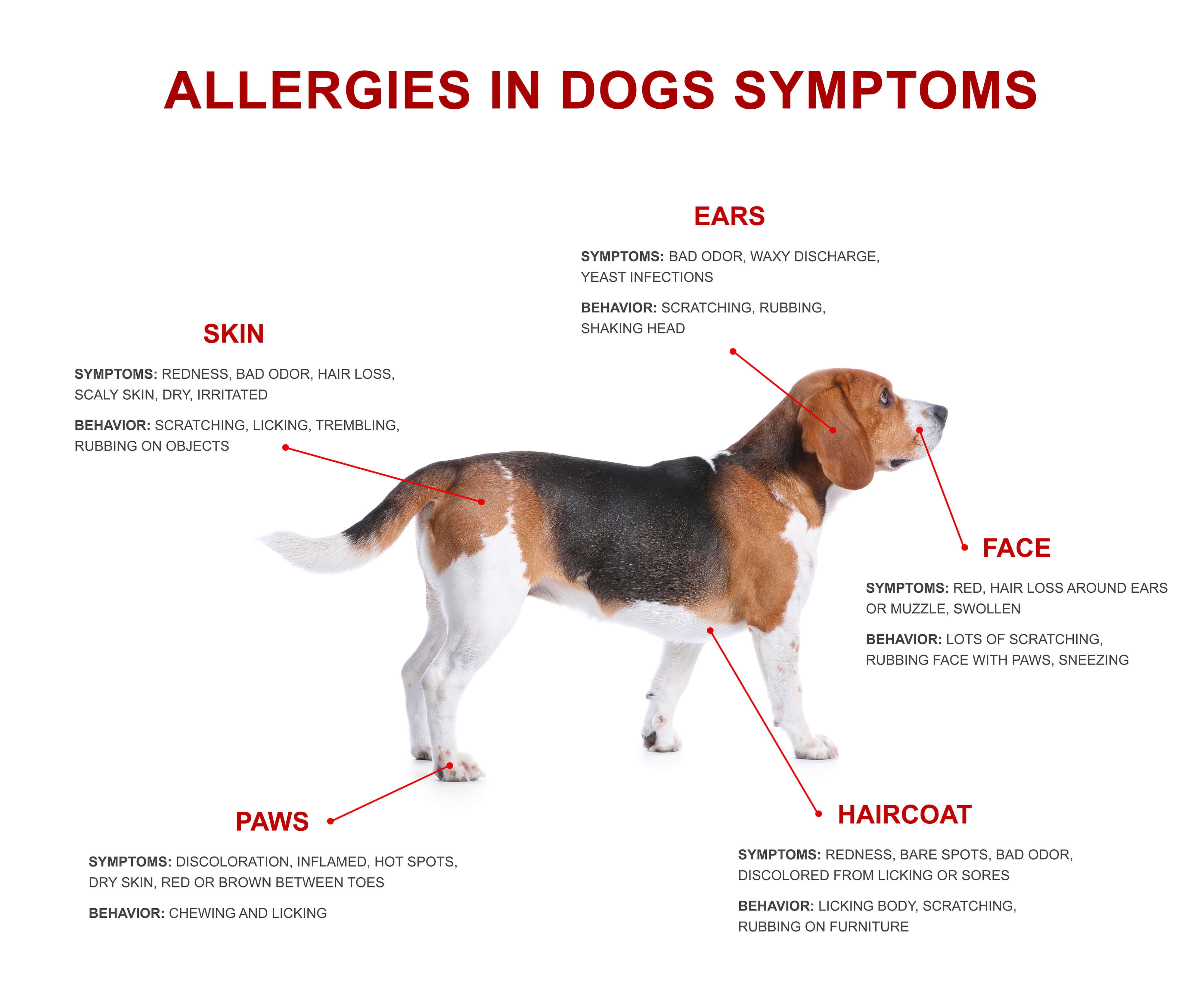Allergies got your furry friend feeling down? Well, worry no more because we’ve got the scoop on safe Benadryl dosage for your pup. We know how frustrating it can be when allergies strike, making your canine companion scratch, sneeze, and just generally feel miserable. But fear not because Benadryl might just be the solution you’ve been searching for.
So, what exactly is Benadryl? It’s a medication that can help relieve those pesky allergy symptoms in dogs. And the best part? It’s safe for your four-legged pal! Yep, you heard that right. Just a little dose of this magical medicine can work wonders for your pup’s allergies.
But hold your horses! Before you go reaching for that bottle, it’s important to know when to use Benadryl and when to avoid it. And we’ll also fill you in on how long it takes for this stuff to kick in. So, sit tight and get ready to learn all about giving safe Benadryl dosage for allergies in dogs.
Safe Benadryl Dosage For Dogs Key Takeaways
The recommended dosage of Benadryl for dogs is 1 milligram per pound of body weight, but it is important to consult with a vet for the best dosage.
Overdosing on Benadryl can lead to rapid heart rate and decreased respiration, so it is crucial to avoid giving an excessive amount.
Common side effects of Benadryl in dogs include constipation, sedation, urinary retention, diarrhea, vomiting, increased heart rate, and loss of appetite. It’s important to monitor your dog closely after administering Benadryl and consult with a vet before adding it to their treatment plan.
Benadryl starts working within an hour and can provide relief from itching and scratching caused by allergies. However, it is important to follow the safe dosage and consult with a vet for the best results.
Most Common Causes For Dog Allergies

Did you know that the most common causes for dog allergies are those pesky animal-sourced ingredients in their food? Yep, beef, chicken, and fish are the culprits behind those itchy, scratchy, and downright annoying allergic reactions. Who would’ve thought that your furry friend could be so sensitive to their dinner? But the superhero of allergy relief can help! Whether it’s insect bites, seasonal allergies, or even environmental allergies, this magical pill can come to the rescue. Just make sure you give your pup the proper dosage because we all know our pups can be a bit dramatic when it comes to their health. So, say goodbye to those annoying symptoms of allergies and hello to a happy, itch-free dog!

What Is Benadryl
Benadryl, also known as diphenhydramine hcl, is the magical potion that blocks histamine receptors and saves the day for both you and your furry friend. It’s like a superhero cape for allergies in dogs! But before you unleash the Benadryl, let’s talk about safe dosages. You don’t want your pup to turn into a drowsy, drooling mess, do you? So, here’s a handy table to guide you:
| Dog Weight (lbs) | Benadryl Dosage (mg) |
| 10 | 5 – 10 |
| 20 | 10 – 20 |
| 30 | 15 – 30 |
| 40 | 20 – 40 |
| 50+ | 25 – 50 |
Remember, this is just a general guide. Always consult your vet before playing doctor. And as for the allergies, well, Benadryl may not be the superhero you hoped for. It’s more like a sidekick, mildly effective in fighting those pesky allergy symptoms in dogs. But hey, every sidekick counts, right?
Is Benadryl Safe For My Pet?
When it comes to ensuring the well-being of your furry friend, it’s crucial to understand the potential risks and benefits of using this popular antihistamine medication. So, let’s talk about Benadryl and whether it’s safe for your precious pet. Well, lucky for you, Benadryl is considered to be generally safe for dogs as long as you stick to the recommended dosage. No need to worry about your pup turning into a drowsy, sneezing mess. Just make sure diphenhydramine is the only active ingredient because we don’t want any toxic surprises. If your dog is suffering from allergies, go ahead and give them a safe Benadryl dosage recommended by your veterinarian.
Can I Give My Dog Liquid Benadryl?
Liquid Benadryl, specifically the children’s formulation, is a suitable option for your furry friend if you want to provide them with relief from certain symptoms. But hold up, before you start pouring, let’s talk about the correct dose. Liquid Benadryl is measured in mg/mL, so get ready for a little math session. For children’s Benadryl, it’s 12.5 mg/5 mL, which means you’ll need to give 5 mL to deliver 12.5 mg to your dog. And don’t worry, the recommended dosage is 0.4 mL per pound. So if your pup weighs 10 pounds, you’ll need to bust out that calculator and give them a whopping 4 mL of liquid goodness. Now, let’s not forget about potential side effects. While most dogs tolerate Benadryl well, some may experience common side effects like drowsiness or dry mouth. And just like any medication, there’s a chance for adverse reactions. So, if your dog starts breakdancing or speaking in tongues, maybe it’s time to call the vet. But hey, don’t let that scare you. Liquid Benadryl can be a great option to provide relief for those pesky food allergies in dogs.
The Most Common Symptoms That Benadryl Can Help Alleviate

One of the most common symptoms that Benadryl can help alleviate is itching and redness caused by food allergies in dogs. Because let’s be honest, your dog scratching itself like it’s auditioning for a world record can get pretty annoying. But Benadryl can calm the itchiness and redness that allergies bring. Picture this: your dog peacefully lounging around, not a care in the world, while you bask in the glory of a quiet, scratch-free existence. It’s like a dream come true! So, if you’re tired of your dog transforming into a scratching machine, just give them the safe dosage of Benadryl recommended by your veterinarian and watch the magic happen. Your dog will thank you, and you’ll finally be able to enjoy some quality pup time.
How Much Benadryl Can I Give My Dog?
To ensure your dog’s safety, consult with your veterinarian about the appropriate dosage of Benadryl based on their weight, symptoms, and overall health condition. Because who needs a vet when you can play doctor, right? But seriously, don’t mess around with your pup’s health. Benadryl can help alleviate a variety of symptoms like motion sickness, runny nose, and itchy skin. However, the dosage is important. The standard is 1 mg tablet per pound of body weight, so grab your calculator and do some math. And please, don’t just raid your own medicine cabinet for those human medications. Stick to the dog-friendly stuff. Keep an eye out for potential side effects like dry mouth or difficulty breathing. If your furry friend starts acting odd or showing serious side effects after taking the medication, it’s time to put that Benadryl away and give the vet a call or rush them to the emergency vet if you see signs of an overdose.
Recommended Benadryl Dosage For Dogs
Any time your giving over the counter medication to your dog, you want to consult with your pet’s doctor to make sure you’re providing them with a safe allergy medication that won’t cause adverse effects. But different dosages are needed based on the weight of your dog:
Benadryl Dosage For Medium-to-Large Dogs
For your medium-to-large dog, it’s important to know the safe dosage of Benadryl to alleviate their allergies and provide them with relief. So, the recommended Benadryl dosage for medium-to-large dogs is 1 mg of Benadryl per pound of body weight. Yeah, I know, it sounds like a math problem, but it’s not that complicated. Just grab your calculator and figure out how much your furry friend weighs. Give them one tablet for every 25 pounds. Simple, right? Now, don’t go overboard and start popping pills like a maniac. Stick to giving them a dose every 8 to 12 hours as needed. But don’t ever give more than 3 doses in a day. And keep an eye out for any common side effects like drowsiness or dry mouth. If things get hairy, consult your friendly veterinary hospital. So, go ahead, give your pup the appropriate dosage, and say goodbye to those pesky skin allergies!
Benadryl Dosage For Small Dogs
Ready to provide your small furry friend with the relief they need? Let’s dive into the perfect solution for their itching and scratching. So, you’ve got a pint-sized pup, and they’re dealing with some pesky allergies? Well, lucky for you, there’s a safe Benadryl dosage for those little guys. When it comes to small dogs under 25 pounds, the children’s formula of liquid Benadryl is your go-to. Forget about those chewable tablets because the liquid is easier to measure and administer. Just remember, it’s 0.4 mL per pound of your dog’s weight. And hey, don’t even think about giving them the adult version – that stuff contains alcohol, which is a big no-no for our furry pals. Oh, and steer clear of the grape flavor too. We wouldn’t want to trigger any more allergies now, would we?
Benadryl Side Effects In Dogs
Be aware of the potential risks and effects that can arise when administering Benadryl to your furry companion. Common side effects include constipation, sedation, urinary retention, diarrhea, vomiting, increased heart rate, and loss of appetite. Just make sure to monitor your dog closely and as always, consult with your vet before adding Benadryl to your dog’s treatment plan, especially if they have any medical conditions or are taking other prescription medications. Safety first, folks!
How Long Does It Take For Benadryl To Work In Dogs?

Within an hour, your dog will no longer be a scratching machine but a calm and content ball of furry joy. It’s like they’ve been transported to a land where allergies don’t exist, all thanks to that trusty little pill. So go ahead, give your pup the safe benadryl dosage they need, and watch them transform into a whole new dog.
When To Avoid Giving Your Dog Benadryl
Imagine your furry companion experiencing glaucoma, high blood pressure, cardiovascular disease, seizure disorder, gastrointestinal or urinary obstruction, or lung disease, and the thought of giving them a little pink pill that could potentially worsen their condition. Well, lucky for you, there’s a way to avoid that! When it comes to giving your dog Benadryl, it’s important to know when to say “no.” If your precious pooch is suffering from any of those aforementioned conditions, it’s best to steer clear of this medication. Sure, it may seem like a quick fix for their allergies, but the potential risks just aren’t worth it. As responsible dog owners, we want what’s best for our four-legged friends, and that means finding alternative solutions. So, before you reach for that bottle of Benadryl, consult your veterinarian for the best way to tackle your dog’s allergies. Remember, there’s always a new medication or treatment that may be more suitable. Don’t forget to do your research and consider the advice of professionals. After all, it’s not worth risking your pup’s health for a temporary solution.
Is Benadryl Safe For Dogs To Calm Them Down?
Are you looking for a reliable way to help your furry friend relax and feel at ease? Well, look no further than Benadryl! Just kidding. Despite its sedative effects on humans, Benadryl can actually have the opposite effect on dogs. Instead of calming them down, it can make them hyperactive. So, if your dog suffers from anxiety, fear of fireworks, or gets nervous when traveling, it’s best to consult with your vet for better options. There are plenty of other calming supplements and medications that are specifically designed for dogs. Plus, there’s training, pheromones, and other techniques that can also be effective. Don’t just assume that Benadryl is the answer to all your dog’s problems. Play it safe and explore the more relevant and appropriate options.
The Tail End
Now that you’re aware of the safe dosage of Benadryl for your furry friend, it’s important to prioritize their well-being. While Benadryl can help with allergies and calmness, it’s always best to consult your vet before administering any medication. Your dog’s safety is paramount, so make sure to follow professional advice.




